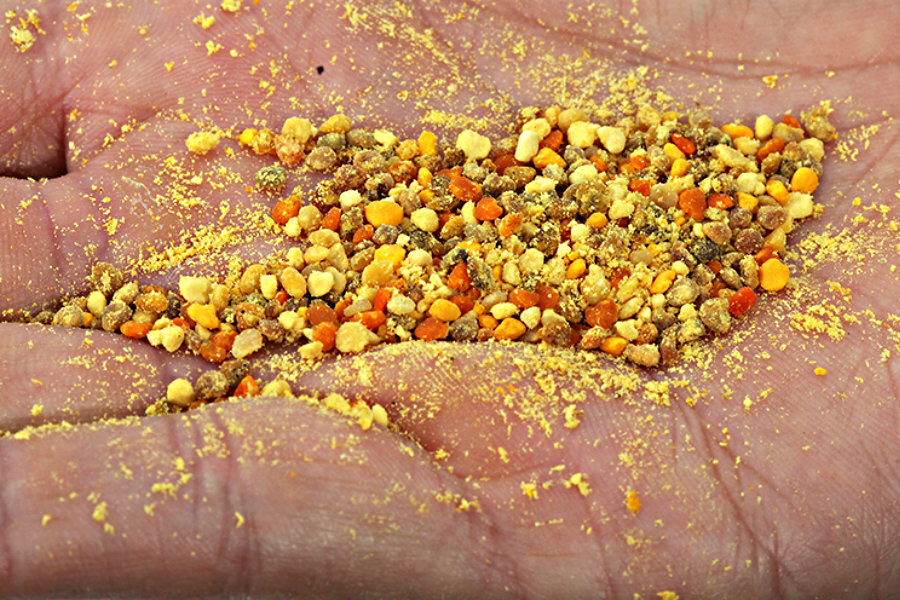To save the bees, mind the household bug spray, study says
Loading...
Pesticide-carrying agricultural crops aren't the only thing putting honeybee populations at risk, according to a recent study: your household may be, too. Bees will thank you next time you reconsider spraying insecticide around the yard (although the other pests will, too).
"As a general community we need to be mindful of whether we really need to use a pesticide for a particular pest problem," Ohio State University professor Elizabeth Long, co-author of research published Tuesday in the journal Nature Communications, tells The Christian Science Monitor.
Entomologists have been concerned about the disappearance of pollinators worldwide for at least a decade, and recent research has revealed some potential sources of their decline, particularly the proliferation of pesticides in agriculture. But farming practices aren't the only ones to blame. The majority of bees' pollen comes from non-crop sources, but is still tainted with pesticides, according to the latest study.
Purdue University professor Christian Krupke and Dr. Long analyzed pollen data gathered over the course of 16 weeks to determine the sources of pollutants in honey bee-collected pollen. Even in landscapes with lots of corn and soybean farming, they found, "pollen from crop plants represents only a tiny fraction of the total diversity of [bees'] pollen resources."
"The sheer numbers of pesticides we found in pollen samples were astonishing," Dr. Krupke said in a Purdue University press release. "Agricultural chemicals are only part of the problem. Homeowners and urban landscapes are big contributors, even when hives are directly adjacent to crop fields."
To conduct their study, Krupke and Long, then a postdoctoral researcher, studied three hives in very different locations: a meadow; an agricultural field treated with neonicotinoids, some of the most heavily-studied insecticides considered harmful to bees; and a cornfield with no pesticide use.
Surprisingly, analysis of pollen in each of the hives generated nearly identical responses. Hives near the meadow and the pesticide-treated field each showed 29 different types of pesticides, while the non-treated cornfield showed 31 types.
In short, the study showed that even when hives are located in non-pesticide use areas, bees are exposed to approximately the same levels of pesticides as they would be in high-use areas.
The two researchers also examined the risk factors of the various pesticides found in gathered pollen, Krupke tells the Monitor. They found that some of the highest toxicities were in pyrethroids, some of which are common pesticides used to combat household nuisance pests.
Although neonicotinoids are well known for their negative effect on pollinator populations, researchers say they are far from the only problem.
"Having an emphasis on neonicotinoids (agricultural pesticides) has the potential to miss some data," says Krupke.
Although much of the scientific community's emphasis on pesticide use as it relates to bees has focused on neonicotinoids (many of which have agricultural uses), homeowners actually use more pesticides per acre than farmers do, he says.
And while farmers may use just one or two types of pesticides in each field, non-cultivated plants often used a range of them. The highest concentrations of pesticides came from the pyrethroids, more frequently used around a home and yard.
Although apian advocates often promote certain practices to limit the impact of treated crops, such as planting pollinator strips on the edges of agricultural fields, Krupke says that the results of this recent study cast doubt on these recommendations.
"What we see is that pesticides are moving into areas that they are not supposed to be in," Krupke says. "Pesticides could easily move from agricultural fields to pollinator gardens."
A better approach may be to reevaluate pesticide use, researchers say. Pollinators are exposed to far more pesticides than simply agricultural pesticides, so limiting their exposure would be difficult, if not impossible.
Instead, researchers say that individuals should give careful thought as to whether pesticide use is truly necessary.
Insecticides should be applied "with an eye towards minimizing contamination of surrounding areas which will help minimize accidental harm to bees and other beneficial insects," Long says.








